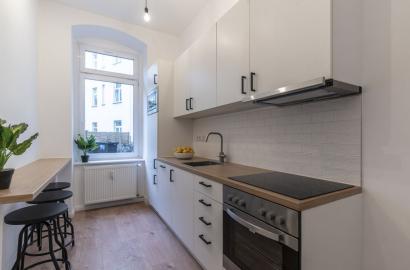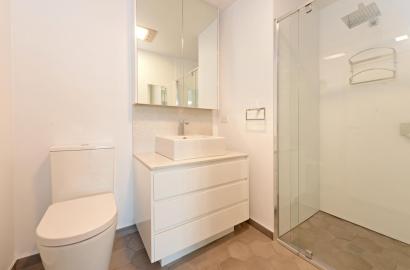Buying a home is an exciting milestone, but many buyers focus only on the down payment and mortgage—overlooking the hidden costs that can add up quickly. If you're not prepared, these unexpected expenses can strain your budget and turn your dream home into a financial burden.
To help you plan better, Proxima Estates has put together a detailed guide on the hidden costs of buying a home and how to prepare for them.
1. Closing Costs – The Final Expenses Before Ownership
Closing costs are one-time fees that must be paid when finalizing a home purchase. These can range from 2% to 5% of the home’s price.
Common Closing Costs Include:
✔ Loan Origination Fee – Charged by the lender for processing your mortgage (0.5%–1% of the loan amount).
✔ Appraisal Fee – To confirm the home's market value (usually $300–$600).
✔ Home Inspection Fee – Ensures the property is in good condition before purchase ($300–$500).
✔ Title Insurance – Protects against ownership disputes ($500–$1,500).
✔ Attorney Fees – If your state requires a lawyer for closing ($500–$2,000).
💡 Tip: Always ask your lender for a Loan Estimate to see an approximate breakdown of closing costs.
2. Property Taxes – A Recurring Annual Expense
Many first-time buyers underestimate property taxes, which vary based on location and home value.
- Taxes can range from 0.5% to 2.5% of the home’s value annually.
- Some states reassess taxes yearly, meaning they could increase over time.
💡 Tip: Research property tax rates in your area before buying. In some cases, buying in a neighboring city can save thousands in taxes over time.

3. Homeowners Insurance – Required by Mortgage Lenders
Homeowners insurance protects your property against damage, theft, and liability. The cost varies based on:
- Home value and location – Higher risk areas (flood zones, hurricane-prone regions) have higher premiums.
- Coverage level – Basic plans are cheaper, but additional coverage may be needed.
💡 Tip: Get multiple insurance quotes to find the best deal and ensure you have adequate coverage.
4. Mortgage Insurance (PMI) – A Cost for Low Down Payments
If your down payment is less than 20%, most lenders require Private Mortgage Insurance (PMI) to protect them in case you default.
- PMI typically costs 0.5%–1% of your loan amount annually.
- Once you reach 20% home equity, you can request to remove PMI.
💡 Tip: Consider saving a larger down payment to avoid PMI and reduce your overall mortgage costs.
5. Utility and Maintenance Costs – More Expenses Than Renting
Unlike renting, homeowners must cover all utilities and maintenance. Some costs include:
✔ Electricity, water, and gas – Bills depend on home size and efficiency.
✔ Trash collection and sewer fees – These may be included in local taxes or separate charges.
✔ Lawn care and landscaping – Costs range from DIY expenses to professional services.
✔ General maintenance – Budget at least 1% of your home’s value annually for repairs.
💡 Tip: Consider energy-efficient homes or solar panels to reduce monthly utility costs.
6. HOA Fees (If Applicable) – Monthly or Annual Charges
If you’re buying in a gated community or condo association, expect Homeowners Association (HOA) fees.
- HOA fees cover maintenance, security, and amenities.
- Costs can range from $50 to $500+ per month, depending on the property.
💡 Tip: Review the HOA rules and financial statements before buying to ensure no surprise fee increases.

7. Moving Costs & New Furniture
Many buyers forget to budget for moving expenses and new furnishings. Costs include:
✔ Professional movers – $500–$3,000+ depending on distance.
✔ Rental trucks or storage units – If moving in phases.
✔ New furniture and appliances – Some homes don’t come with fridges, washers, or curtains.
💡 Tip: Look for pre-owned furniture or wait for seasonal discounts after moving in.
8. Renovations and Upgrades – Customizing Your Home
Even if a home seems “move-in ready,” you may want to make improvements. Common upgrades include:
- Painting – $1,000–$3,000 for an entire house.
- Flooring replacement – $3,000–$10,000 depending on material.
- Kitchen or bathroom updates – Can cost anywhere from $5,000 to $50,000+.
💡 Tip: Prioritize essential repairs first and spread out cosmetic upgrades over time.
How to Prepare for These Hidden Costs
✔ Create a savings cushion – Have at least 3–6 months of expenses saved before buying.
✔ Factor in total homeownership costs – Don’t just budget for the mortgage; include taxes, insurance, and maintenance.
✔ Negotiate closing costs – Some lenders allow you to roll closing costs into the mortgage or negotiate seller contributions.
✔ Research before buying – Understand local tax rates, HOA fees, and expected utility costs in your desired neighborhood.

Final Thoughts
Buying a home is more than just a down payment and mortgage—it comes with hidden costs that can surprise you if you’re unprepared. By understanding these expenses and budgeting wisely, you can avoid financial stress and enjoy homeownership with confidence.
Need expert guidance on buying a home? Proxima Estates is here to help. Contact us today to find your dream home with full financial transparency!




